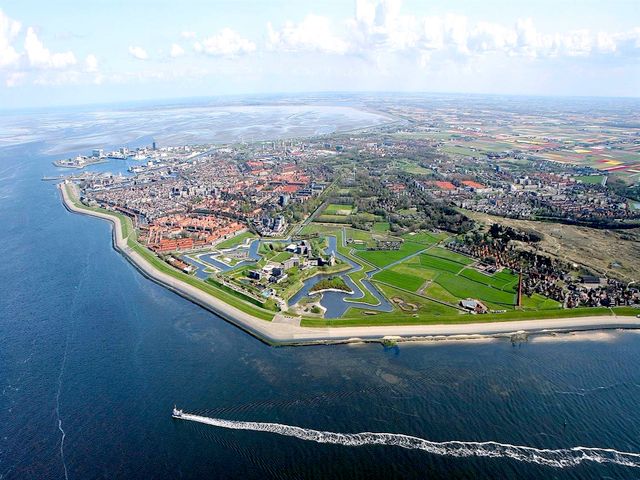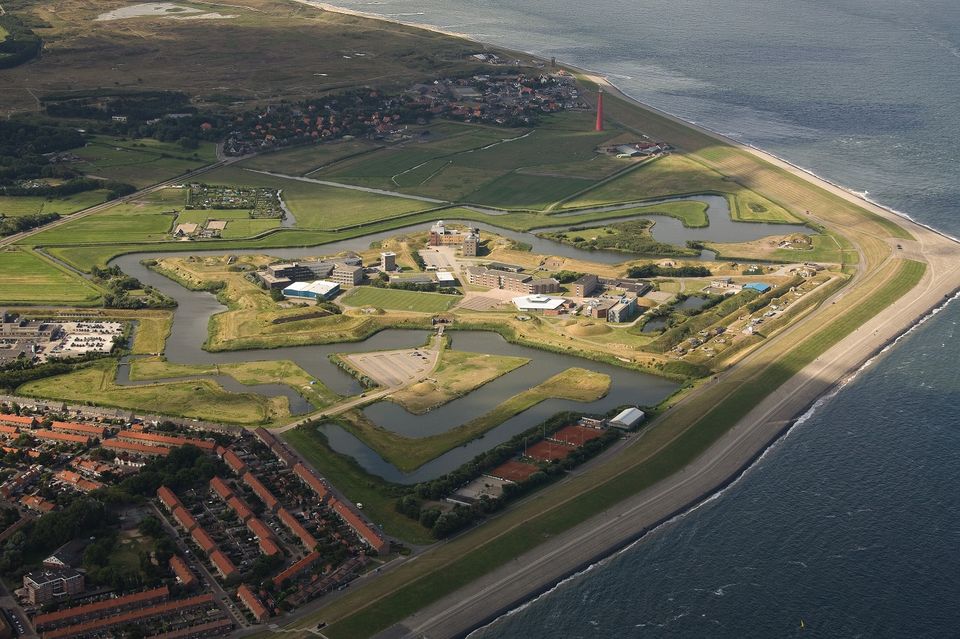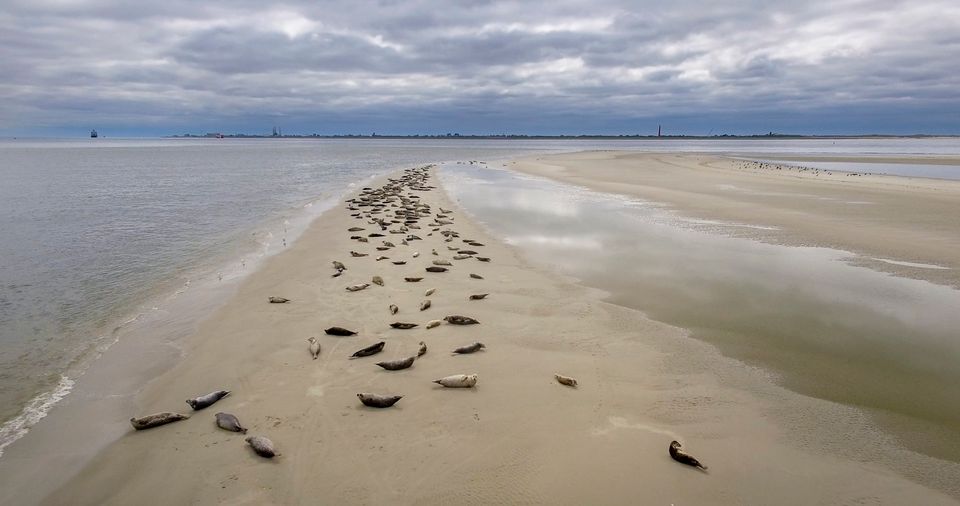Post 0 marks the start of the Wadden Sea
When Napoleon Bonaparte in Fort Kijkduin visited Huisduinen in 1811 he saw the very strategic importance of Den Helder. He commissioned the construction of Fort Kijkduinen and wanted to make Den Helder a major naval port. It was to become ‘the Gibraltar of the North’.
In 1813 the first fort was finished, providing housing for 700 soldiers. The fort was initially named after the French colonel Francois Morland. But when France was defeated at Waterloo in 1815 and the Kingdom of the Netherlands was established, the fort was renamed Fort Kijkduin.
Stelling Den Helder
Take a revitalising walk along Stelling Den Helder, an impressive line of forts, defence buildings and connecting dikes. The Stelling has been used as defence against attacks from the direction of the Zuiderzee and Amsterdam since the Eighty Years' War. This line was also built by Napoleon and later adapted by the Dutch government and then again by the German occupants between 1940-1945.
Lange Jaap (Long James)
From the Liniedijk it continues on to the large Fort Erfprins which is still used as a training camp for the Marines. The route continues in a big curve around the fort and through a beautiful area over the grasdijk along the sea back to Huisduinen. Underway you’ll pass the fantastic lighthouse called 'Lange Jaap', the highest lighthouse still in use in the Netherlands and the highest cast iron tower in Europe. The village of Huisduinen has always been a seaside resort. Here on the beach you’ll find Post 0, the start of the Wadden Sea. Huisduinen is situated north of De Grafelijkheidsduinen and to the south you’ll find nature reserves De Donkere Duinen (formed by the remains of former Wadden island Huisduinen) and Mariëndal.
Raging Ball
From on top of the dunes, and by clear skies, you’ll look out over Texel. And in between is Noorderhaaks, also known as the Razende Bol. This elevated sandbar is more than one hundred years old and is slowly ‘walking’ towards Texel. At high tide the Razende Bol is approximately 700 hectares and from a distance it appears to be completely desolate. But if you look closely it is actually teeming with life. For birds it is a layover spot during migrations, a brooding area and a refuge during high tide. Grey (seals) come to the island to rest and a small number of them even choose to give birth here. It is the pioneers that persevere: seals, herring gulls, ringed plovers and the rather rare little tern.
Museum Fort Kijkduin
Fort Kijkduin is open every day year round. There is a museum dedicated to the history of the fort, its inhabitants and the area, as well as the Noordzeeaquarium located in the extensive underground corridor network.
-
Fort Kijkduin
Fort Kijkduin

-
Wadden Coast North Holland
Wadden Coast North Holland



